#ranuncolaceae
Text
Il Ranuncolo: consigli e informazioni utili per coltivare questa meravigliosa pianta
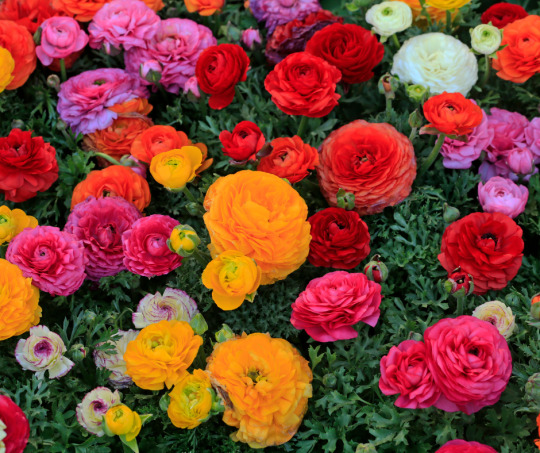
Il Ranuncolo è una delle piante più amate dai giardinieri, grazie alla sua bellezza e alla sua varietà di colori. Questa pianta, che appartiene alla famiglia delle Ranuncolaceae, è originaria dell'Asia, dell'Europa e dell'America del Nord ed è molto diffusa in tutto il mondo. In questo articolo ti fornirò alcuni consigli utili per coltivare il Ranuncolo e godere della sua bellezza nel tuo giardino.
Illuminazione
Il Ranuncolo è una pianta che ama la luce, ma non sopporta il calore eccessivo. Pertanto, è importante scegliere un luogo ben illuminato, ma che sia anche ombreggiato nelle ore più calde della giornata. Inoltre, il Ranuncolo è una pianta che predilige i terreni ben drenati, ma che richiede anche una buona quantità di umidità. Pertanto, è consigliabile piantarla in un terreno fertile e ben drenato, arricchito con concime organico.
Annaffiatura
Il Ranuncolo è una pianta che richiede una buona quantità di acqua, soprattutto nei periodi di siccità. Tuttavia, è importante evitare di annaffiare eccessivamente la pianta, in quanto il terreno troppo umido può favorire lo sviluppo di malattie fungine. Pertanto, è consigliabile annaffiare regolarmente il Ranuncolo, ma evitando di bagnare le foglie.
Fertilizzazione
Il Ranuncolo è una pianta che richiede una buona quantità di nutrienti per crescere sana e forte. Pertanto, è importante fertilizzare regolarmente la pianta con un concime organico, preferibilmente in primavera e in autunno. Inoltre, è possibile utilizzare un fertilizzante liquido per piante fiorite, che contiene una buona quantità di potassio e fosforo.
Potatura
Il Ranuncolo è una pianta che non richiede una potatura particolare. Tuttavia, è possibile tagliare le parti secche o danneggiate per favorire la crescita della pianta. Inoltre, è possibile tagliare i fiori appassiti per stimolare la produzione di nuovi fiori.
In questo articolo ti ho fornito alcuni consigli utili per coltivare il Ranuncolo, una delle piante più amate dai giardinieri. Ricorda che il Ranuncolo è una pianta che richiede molta luce, un terreno ben drenato e una buona quantità di acqua e nutrienti. Inoltre, è importante evitare di annaffiare eccessivamente la pianta e di fertilizzarla regolarmente. Se sei interessato a scoprire altri consigli per il giardinaggio, ti invito a visitare il mio canale YouTube GiardinoWeb, dove potrai trovare tanti video utili e informativi sulla cura delle piante e del giardino.
Visita la pagina Instagram e il canale YouTube di GIARDINOWEB.
Read the full article
0 notes
Photo



Lamium purpureum, Lamiaceae & Anemone nemorosa, Ranuncolaceae
I have already written about the delicate wood anemone before, but never about the ever so common purple dead-nettle: I generally try to single plants out for photos, but couldn’t walk away from this gorgeous combination.
On the sloping side of a dry irrigation ditch, in the dappled shade of a row of tall trees, the anemone’s dissected foliage was covering the ground in a dense mat, out of which were poking the bright pink lipped flowers of the dead-nettle.
The reason why this herbaceous perennial bears that common name is due to the superficial similarity between its leaves and those of the unrelated stinging nettle (Urtica dioica), however its hairs won’t cause any harm. The top part of the plant is generally a rich burgundy-purple colour, hence the other part of the common name and the species name, but it is a variable plant and looks just green when growing in a more shady position, as in these photos.
It is often considered an undesirable plant in a garden setting, some might call it a “weed”, but I let it grow in my allotment for two main reasons. It’s in bloom from early spring often until late autumn, sometimes even longer in a sheltered position, and its flowers are loved by pollinators, especially bumblebees. Its young shoots are also edible and it’s a pot herb with an interesting flavour, so I see it as a bonus leaf vegetable.
#lamium purpureum#lamiaceae#purple dead-nettle#anemone nemorosa#ranuncolaceae#wood anemone#windflower#wildflowers#plantblr#horticulture#botany#gardeners on tumblr#edible plants#italy#spring
72 notes
·
View notes
Photo

Se siete in giro per monti e prati e vedete questo bel fiore, guardatelo e basta, l'Aconitus napellus L. infatti, è altamente tossico. Dal greco akòniton (= pianta velenosa) , questa pianta contiene un alcaloide tossico: l'aconitina, molto pericolosa. #aconitusnapellus #aconito #aconitum #tossico #veleno #velenoso #aconitina #alcaloide #nonusare #nontoccare #noningerire #fiori #fioridimontagna #ranuncolaceae #dangerous #dangerousflower #dangerousflowers #dangerousinnature #instaflower #instaflowers #flower #wildflower #plants #flowerphotography #botanical #natureisbeautiful #natureisdangerous #natureisdangerousandbeautiful #livigno #tuttolivigno https://instagr.am/p/CC3r96dKVwU/
0 notes
Photo
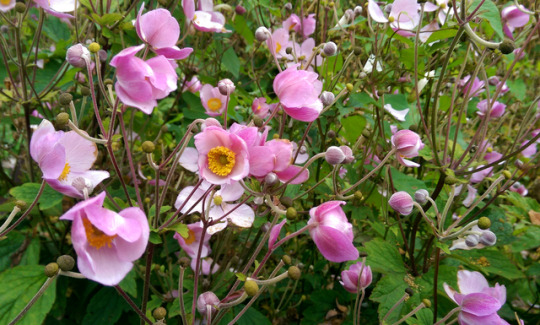
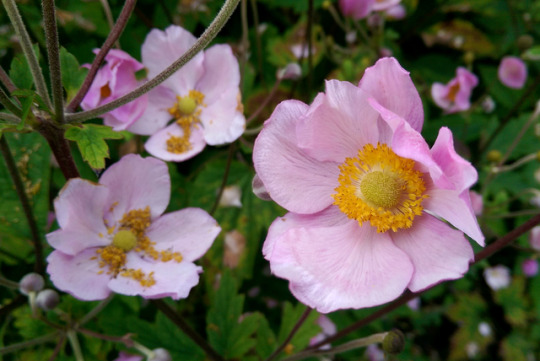
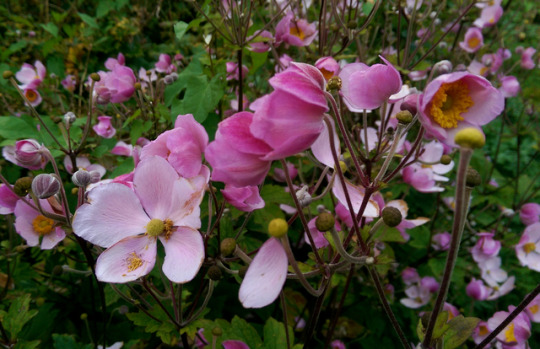
Anemone hupehensis, Ranuncolaceae
It’s been well over a month since the end of my horticulture course at Glasgow Botanic Gardens, and after having spent one full day there weekly for about three months I really start missing watching that beautiful place change slowly through the seasons. Some of the last photos I took there were of the enchanting show put on by the airy Japanese anemone in the herbaceous border at the beginning of autumn. Although I have a feeling it might actually be a hybrid of A. hupehensis, the former curator introduced it as above as part of a demonstration on how to divide clump-forming and rhizomatous herbacous perennials. He kindly gave away small suckers to some of my colleagues with gardens -the times I hate living in a flat with no balcony...the plant structure and the flowers are so beautiful, even in pink.
This species is native to central China, where its wild form grows in damp, open woodland, thriving in the semi-shaded clearings between trees, where a layer of leaf litter and snow is deposited annually. The Japanese anemone is quite hardy, and with shelter and mulching provided, will do well in most damp, but well-draining, semi-shaded areas of a garden, flowering from late summer to late autumn and withstanding well the first frosty days of the cold season. The abundance of flowers, which come in white, pink and purple, is also enjoyed by wildlife, as the plant is often visited by bumblebees and hoverflies in a period where many other flowering species are already going dormant. Due to its height, about 1 m or just over 3 ft, it’s definitely a good addition as a focal point in a bedding display if not much space is available, otherwise it could fill a whole border in an informal garden setting.
#anemone hupehensis#anemone x hybrida#japanese anemone#ranuncolaceae#plants#plant identification#plant photography#botany#plantblr#gardeners on tumblr#horticulture#wildlife friendly garden#flowers#glasgow botanic gardens#glasgow#scotland
100 notes
·
View notes
Photo

I fiori di Livigno. Primavera-Estate BOTTON D'ORO TROLLIUS EUROPAEUS #flowers #mountainflowers #bottondoro #ranuncolaceae #livigno #alivigno. https://instagr.am/p/B_PhZImK9b1/
0 notes
Photo

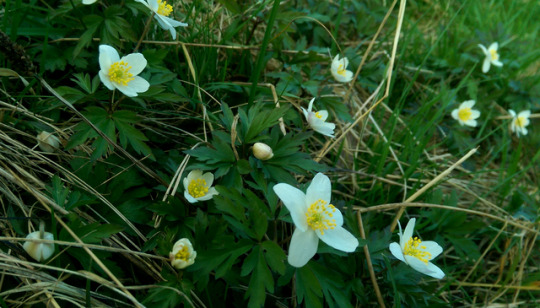
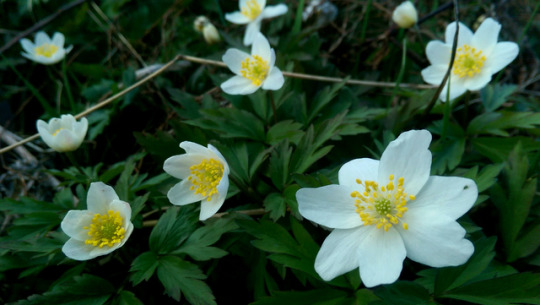
Anemone nemorosa, Ranuncolaceae
Yesterday my boyfriend and I rented bikes and went a ride along the river Clyde, which has given me the chance to do some flower spotting. Unfortunately the weather still doesn’t allow for much variety -heavy snow has been predicted for tonight- so it’s still going to be a while for an actual floral boom. Nevertheless, I found some beautiful wood anemones peaking out from beneath the dead grass. It wasn’t a large colony, but it managed to attract the first bumblebee we have spotted since winter started, which was quite exciting -literally, as it also tried to get inside my jacket as I was taking photos.
The plant is a common European woodland species which flowers profusely right before the trees above spread the first leaves. Its toxicity is well known, but it has great value in the ornamental market with a large number of cultivars available. A peculiar trait is the great variability in the number of the white tepals: in the photos above you can see some flowers have 6, others 7. The number can go up to 10, but most wild flowers look like the ones I photographed.
#anemone#anemone nemorosa#wood anemone#flowers#white flowers#spring#early flowering plants#plants#plant identification#plant photography#botany#plantblr#ornamental plants#toxic plants#gardeners on tumblr#plant blog#river clyde#glasgow#scotland#piante#fiori#primavera#identificazione piante#fotografia piante#botanica#ranuncolaceae
188 notes
·
View notes
Photo
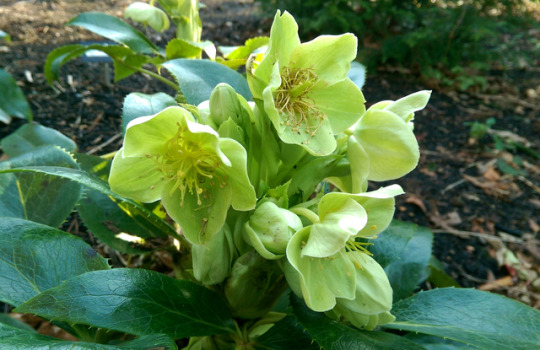

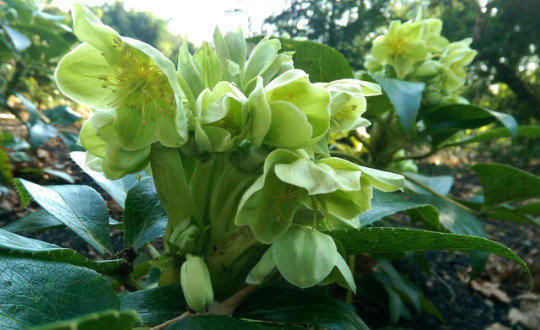
Helleborus argutifolius, Ranuncolaceae
Out of all the colourful hybrids and varieties at the Royal Botanic Garden in Edinburgh, the contrast between the round, bright chartreuse sepals and the dark and leathery dentate leaves of the Corsican hellebore, or holly-leaved hellebore, made this my favourite.
As the common name suggests, this species is native to the Mediterranean islands of Corsica and Sardinia, where it often grows in steep ravines and on rocky slopes, preferring the exposed, sunny side. With its long lasting flowers, Hellebore is a good source of nectar for early wildlife, but is toxic to humans and pets.
#hellebore#helleborus argutifolius#corsican hellebore#holly leaved hellebore#sepals#flowers#green#plants#plant identification#plant photography#botany#plantblr#gardeners on tumblr#toxic plants#wildlife friendly garden#early flowering plants#winter flowers#plant blog#scotland#royal botanic garden edinburgh#edinburgh#edinburgo#scozia#piante#giardino botanico#fotografia piante#identificazione piante#botanica#fiori#ranuncolaceae
136 notes
·
View notes
Photo



Clematis tangutica, Ranuncolaceae
Especially when Scotland turns pretty grey, I’ve mentioned often enough how much I love bright yellow flowers, so you can imagine how wide my eyes got when I spotted what I could instantly tell was a yellow Clematis scrambling up an old stone wall in the orchard of Pollok House, here in Glasgow.
I had never seen this species before and it took me some good digging to find its story. Generally known as the golden-bell clematis, or orange peel clematis, it is native to Central Asia down to north-western China and reached the Royal Kew Gardens, in London, at the end of the IX century through St. Petersburg. After a couple of decades it was introduced to the market, and a number of cultivated varieties were developed. Given how this plant looks more similar to the type species than to any of the cultivars I’ve had a look at, I wouldn’t be surprised if it were a direct descendent, if not an original planting, dating back to when it first became available.
Now all I can imagine is the incredible effect it would create if interplanted with another summer/autumn flowering clematis in a contrasting colour, like the pale blue ‘Perle d’Azur’. Just magical.
#cleamatis tangutica#golden bell clematis#orange peel clematis#ranuncolaceae#plantblr#flowers#horticulture#botany#gardeners on tumblr#historic gardens#pollok country park#glasgow#scotland
50 notes
·
View notes
Photo



Clematis vitalba, Ranuncolaceae
This native climbing plant is very successful in the urban landscape of my hometown, where it tends to colonise garden hedges with good sun exposure. It’s also very common in the near wilderness and countryside, as it loves to spread with bramble through deciduous woodland and hedgerows.
Something I read as a kid about this plant always stuck with me because it was quite curious: supposedly, beggars used to rub the leaves on the exposed skin of the body to procure themselves rashes and sores to look more pitiful and possibly earn more money. I sort of always wanted to try it -as a kid- but never really decided to actually test it. Regardless of its aggressive and invasive growth habit, the small flowers look quite interesting, as well as the plumed seeds.
Photos from northern Italy in early October.
#clematis#clematis vitalba#clematide#ranuncolaceae#old man's beard#vine#climbing plants#vines#piante rampicanti#flowers#wildflowers#fiori#flora selvatica#white flowers#plants#plant blog#blog piante#botany#botanica#garden hedges#hedgerow#plant photography#plant identification#identificazione piante#plantblr#gardeners on tumblr#italy#italia#urban landscape
21 notes
·
View notes